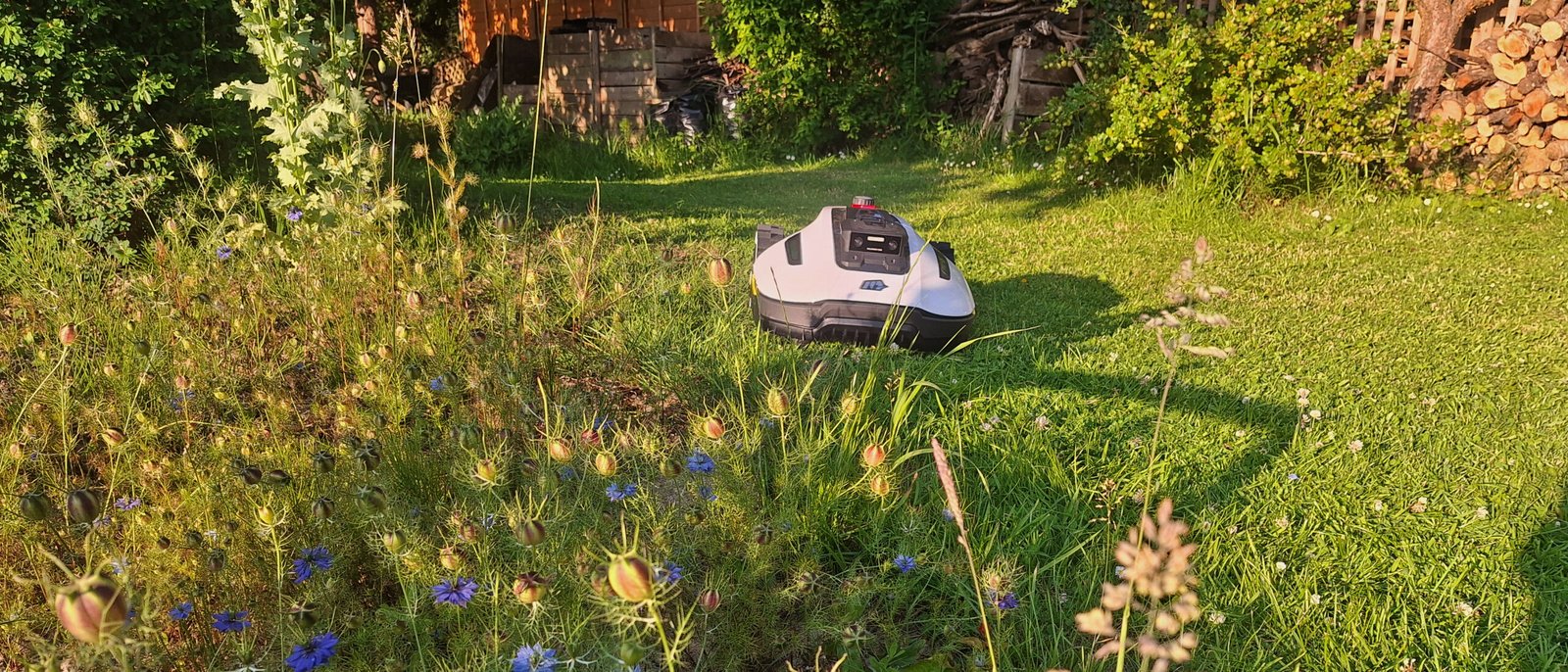Why you can trust TechRadar
We spend hours testing every product or service we review, so you can be sure you’re buying the best. Find out more about how we test.
Mammotion Yuka Mini: two-minute review
The Mammotion Yuka Mini is a relatively compact, simple and affordable robotic mower for small to medium-sized lawns. There are a few different options, but for this review I tested the Mini 600 (called the Mini S in the US) for yards that are 0.15 acres / 600㎡ in size.
While it’s far from the fanciest lawnbot on the market, it handled various obstacles impressively well. My parents’ yard comprises uneven areas, trees, awkwardly placed beds, and a brook; but none of these posed an issue for the Yuka Mini during tests. It navigated accurately, avoided unexpected obstacles impressively well, and never got lost or tried to take a swim.
I was also extremely happy with the mowing itself. It left the yard looking far neater than if I’d cut it manually, with the grass evenly trimmed and faux-stripes created by the logical mowing route. It operated quietly enough that I could happily read a book nearby, and while not exactly lightning-fast, it has proved sufficiently speedy to tackle the lawn size for which it’s designed in an efficient manner.
The impressive performance is hampered somewhat by the brand experience. The app feels basic and a little unintuitive. The instructions provided for setup aren’t clear enough for lawnbot newbies – who should also note that finding a good spot for your charge station and RTK receiver is key. During tests I also found the bot would sometimes lose connection, needing to be carried back to within Wi-Fi range before it could be instructed.
Nevertheless, once I’d managed to get everything up and running, I found myself forgetting the minor pain of setup very quickly. I really can’t overstate how much time and effort this little bot has saved over the past few weeks, and the lawn looks neater than ever. Overall, for the price it’s a very solid investment.
That’s the short version; read on for my full Mammotion Yuka Mini review.
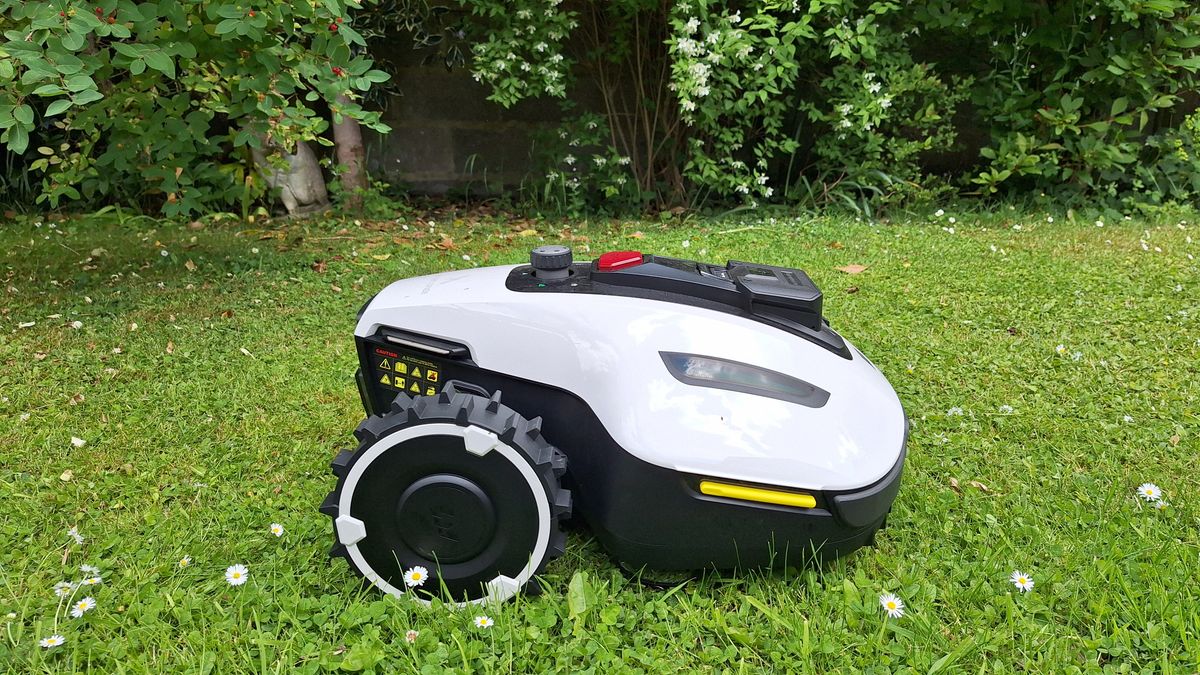
Mammotion Yuka Mini review: price & versions
- List price: from $1,099 / £849 / AU$1,499
- Launched: February 2025
- Available: US, UK, AU, Europe
In the US, you have a few options in the Yuka Mini range. The equivalent to the model I’ve reviewed here is the Mini S, which costs $1,099 and is designed for yards of 0.15 acres / 600 square meters in size. Alternatively, you can opt for a H-series model, which can deal with taller grass. In that line is the Mini 600H for $1,099 or the Mini 800H for $1,299.
In the UK and Australia, you have the Mini 600 (reviewed here) for £849 / AU$1,499. If you have a slightly larger garden, you can go for the Yuka Mini 800 for £1,049 / AU$1,899. I’ve spotted discounts in all territories; it’s not too difficult to avoid paying full whack if you’re patient.
While not an especially cheap purchase, I think it offers decent value for money. Build quality is solid and performance is reliable, and this compact lawnbot really is a big effort-saver.
In terms of rival brands, Husqvarna’s bots are geared towards larger yards. At time of writing, it has its Automower 115H (which can mow up to 0.4 acres) for $699.99, then prices hop straight up to $1,999.99 for the Automower 415X (up to 0.37 acres).
The Eufy E15 is suitable for yards up to 0.2 acres and is much pricier, at $1,799.99 / £1,499. However, it’s a different kind of bot because it uses self-drive car tech rather than satellites to navigate, and therefore is significantly easier to set up.
- Value for money score: 4 out of 5
Mammotion Yuka Mini specs
|
Product: |
Yuka Mini S (US) / Yuka Mini 600 (UK) |
|
Recommended lawn size: |
0.15 acres / 600㎡ |
|
Max lawn size: |
0.2 acres / 800㎡ |
|
Cutting width: |
7.5in / 19cm |
|
Cutting height: |
0.8-2.4in / 2-6cm |
|
Drivetrain: |
2-wheel drive |
|
Max zones: |
15 |
|
Incline ability: |
50% / 27 degrees |
|
Waterproof: |
IPX6 |
|
Lawnbot size (L x W x H): |
20.7 x 16.3 x 11.1in / 52.5 x 41.3 x 28.1cm |
|
Lawnbot weight: |
23.4 lbs / 10.6kg |
|
Mowing area per charge: |
0.04 acres / 150㎡ |
|
Charge time: |
90 mins |
|
Mowing time per charge: |
55 mins |
Mammotion Yuka Mini review: design
- Relatively compact, lightweight bot with five cutting blades
- Comes with an RTK receiver and charge station (garage roof is extra)
- AI-equipped, front-mounted camera for object avoidance
The Mammotion Yuka setup comprises three elements: a charge station, an RTK receiver and the lawnbot itself.
Let’s start with the robot. It’s fairly compact in size, with a plastic upper shell and two chunky, deep-tread wheels to help it traverse uneven ground. On the top is a large control panel that includes a knob to manually adjust cutting height, some simple press buttons, and a big red emergency stop button. There’s also an AI-powered camera to help with object identification and avoidance. The whole thing is waterproof to IPX-6 (i.e. it will be fine even in a downpour).
Flip it over and you’ll find two smaller front wheels and a spinning cutting deck that holds five ultra-sharp blades. Mammotion has thoughtfully included a ridged grip section at the front and back – well away from those blades – to enable you to safely and securely pick up the robot, if you need to move it past an area that isn’t accessible by driving. It’s compact and light enough that most able-bodied people should be able to carry it without too much trouble.
The battery tucks in the back of the bot and is detachable, should you need to replace it further down the line.
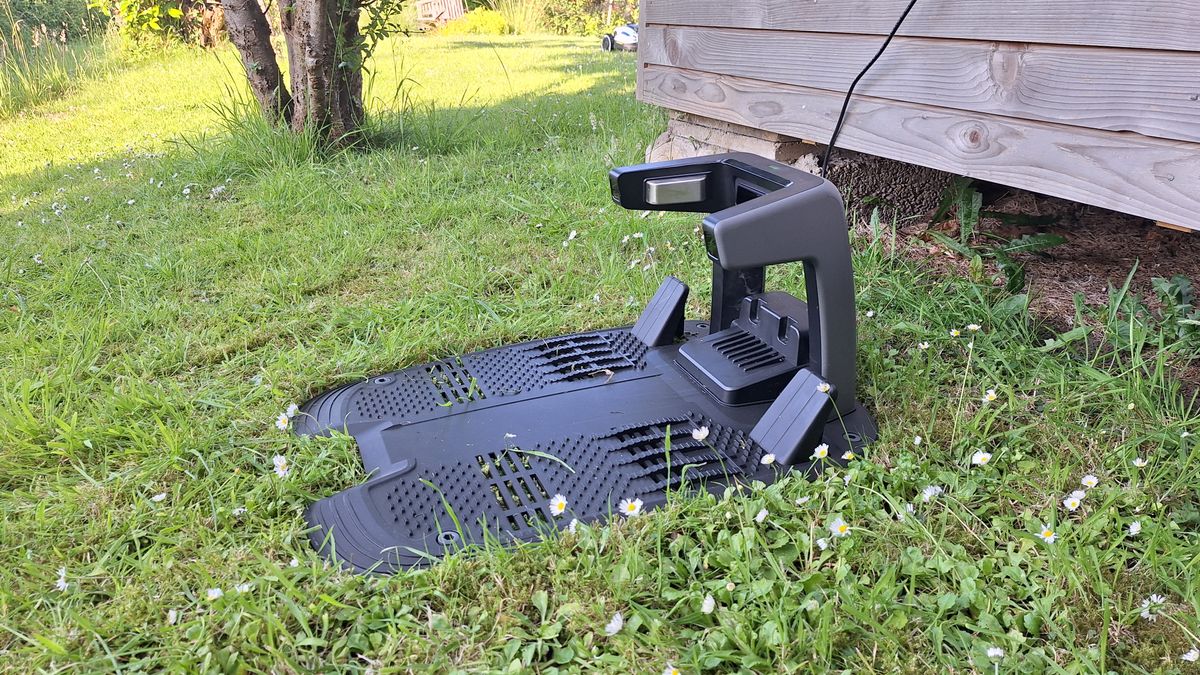
The charge station is where the bot returns to dock. It’s a black plastic base with raised charge contacts, and plastic ground screws are provided to secure it into the ground. It’s potentially worth investing in a “garage roof” to provide protection; despite being waterproof, prolonged exposure to the elements will surely limit the lawnbot’s lifespan in the longer term.
You’ll want to think about where the charge station will live before buying. It can’t go just anywhere, but the literature that comes with the lawnbot isn’t great at explaining this. The charge station needs to be somewhere relatively flat, with a clear route to mowing areas, and access to a power outlet. While it doesn’t need line-of-sight to the lawnbot (it will communicate via radio signal), it does need at least some view of the sky, so that the bot can talk to the satellites when docked. I struggled to find somewhere suitable initially.
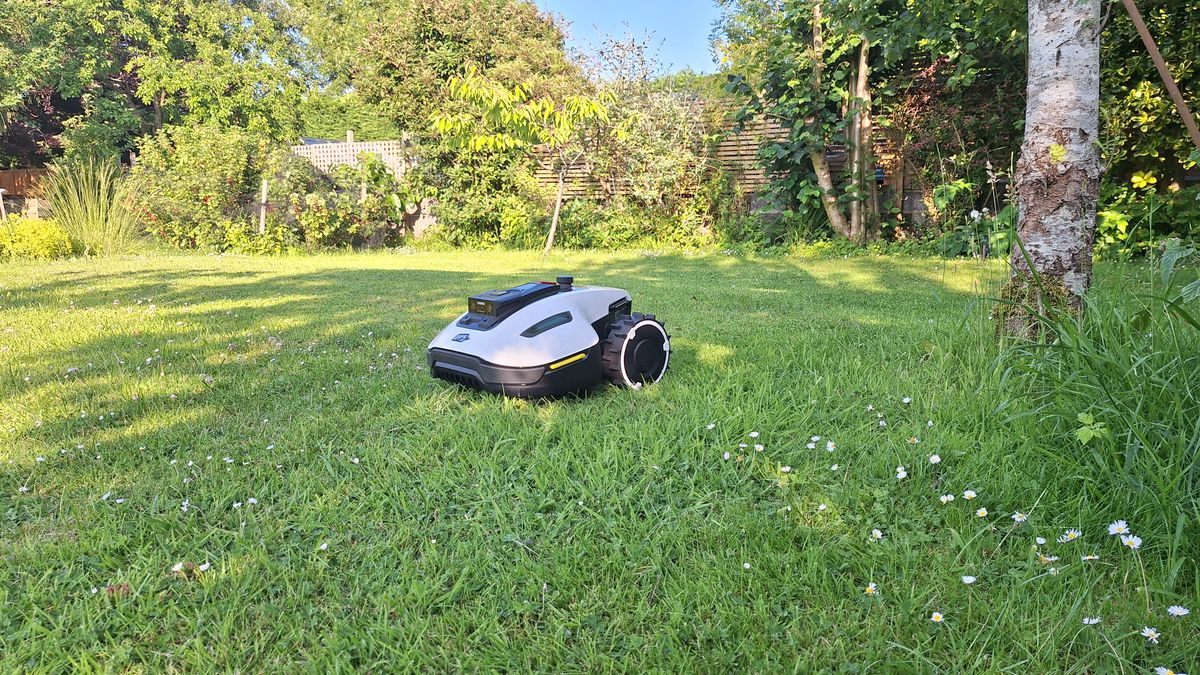
Finally, the RTK station. This essentially helps make the satellite positioning data more accurate, and is important if you don’t want your bot to end up in a flower bed. It looks like a small-ish rounded dome with an antenna protruding downwards – not too obtrusive, but I set it up in my parents’ garden and the feedback from my mum was that she wished it wasn’t white, because it sticks out too much and spoils her view. (I think she has a point.)
You’ll also want to figure out where the RTK station will live before making your purchase. It’s best positioned high up, with a clear view of the sky in as many directions as possible. It also needs to be connected to a power source.
There is an option that means you don’t need to install the RTK receiver. The Yuka Mini can map and navigate using a “NetRTK and 4G module” – at the time of writing it’s free to use, but this added functionality typically comes with a subscription fee. I did not test this option, and I’m not sure if it’s suitable for any garden or if there are requirements.
- Design score: 4.5 out of 5
Mammotion Yuka Mini review: performance
- Neat, even cutting and impressively quiet in use
- Navigation was accurate throughout my testing period
- Setup and initial use can be confusing if you’re not familiar with lawnbots
Moving on to how well the Yuka Mini performed in practice. I’ll start with setup, and the results of my cutting tests.
Setup
The Yuka Mini was the first robot lawn mower I’d tested, and I found initial setup rather painful. Information is lacking from Mammotion (I feel this area could do with improvement), so if you’re in this boat too, prepare to do a bit of independent research before embarking on setup. The key things are to find a good spot for your charge station and RTK receiver, as I’ve discussed above.
With that done, it’s a case of mapping your space. There are two options here: manual (for complex mowing areas) and automatic (for simple areas with clear boundaries). My parents’ yard, where I tested this bot, includes various grassy areas. The main one includes uneven areas of green, large mid-lawn beds, and has a brook running down one side, so I mapped it manually.
This involved driving the bot carefully around the perimeter of the lawn, using my phone as the remote control. Once I was done, I added no-go zones around any fixed obstructions (trees, beds, patio areas) within the lawn, again by driving over and around them. If you’re used to robot vacuums, this mapping process feels much more old-school, but there’s no denying it’s pretty fun.
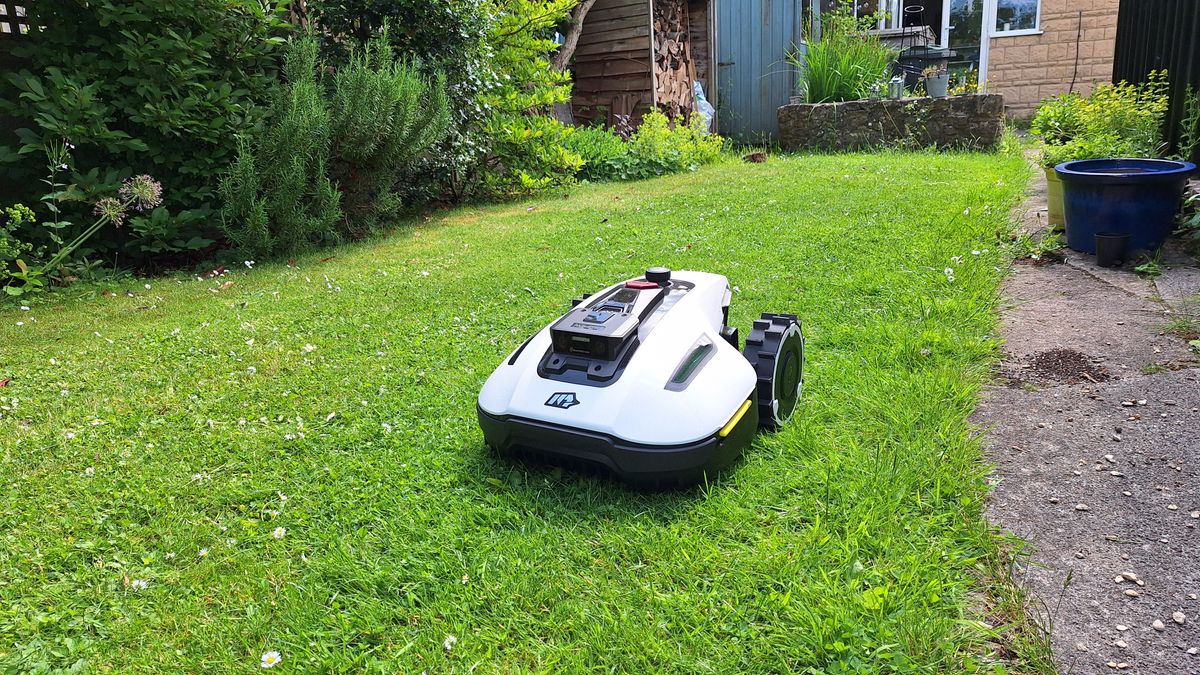
The yard at the front of the house is simpler, with no waterways for the bot to fall into, so I took a chance on automatic mapping. I was impressed – the lawnbot mapped the space quickly and figured out the borders of the beds accurately. Note that you can’t map very small areas.
I added routes between connected areas, to enable the bot to find its way back to the base. For some areas – for example, that front yard – it wasn’t possible to create a path back to the charge station. I was still able to map and mow these areas, but I had to carry the robot back to the charge base area once it was done, and it would yell at me that the robot was tilted as I did so.
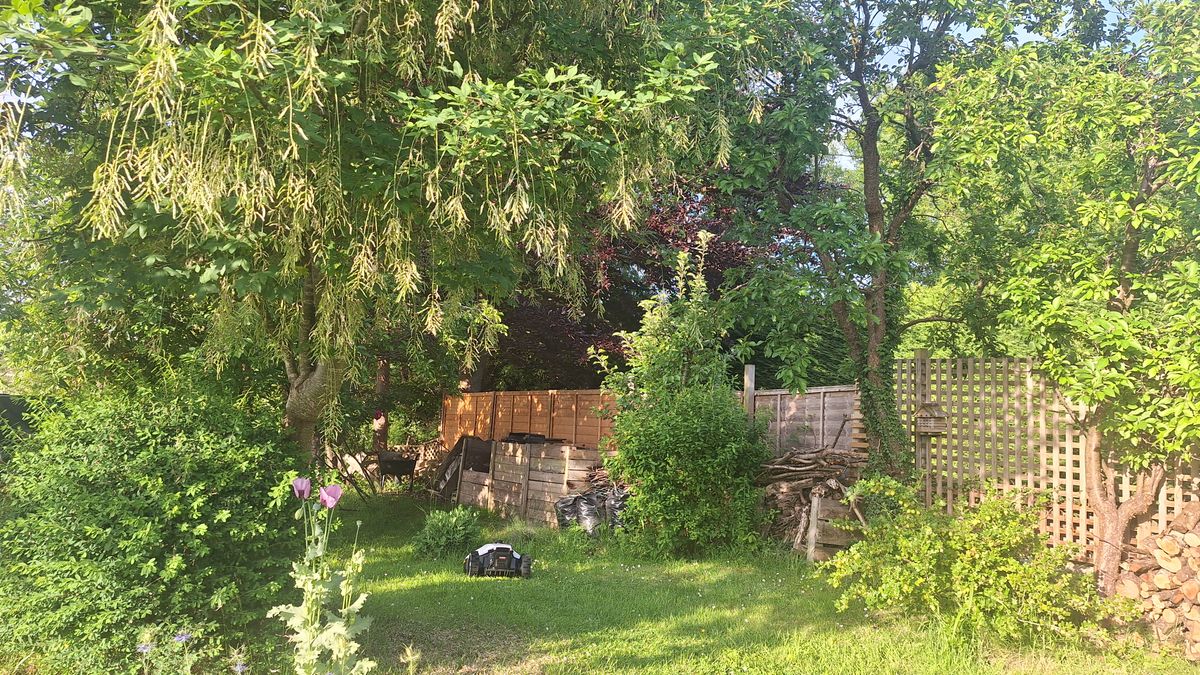
Cutting and navigation performance
I was very impressed with this robot’s cutting performance. It mowed each lawn zone neatly and evenly, leaving faux stripes in its path. It appeared to take a logical path, too, mowing in parallel lines over the main body of each lawn area and then looping around the perimeter to catch the edges.
There were very occasionally narrow strips between lines that remained uncut, but these could be taken care of by remote-control mowing after the task was complete, or (more commonly for me) left to be caught on the next mowing session.
The Yuka Mini also proved very quiet in operation, and significantly quieter than a traditional mower. I was able to happily sit on a sun lounger on the patio and read my book while it took care of the adjacent lawn – surely, the ideal scenario anyone is hoping for when they purchase one of these.
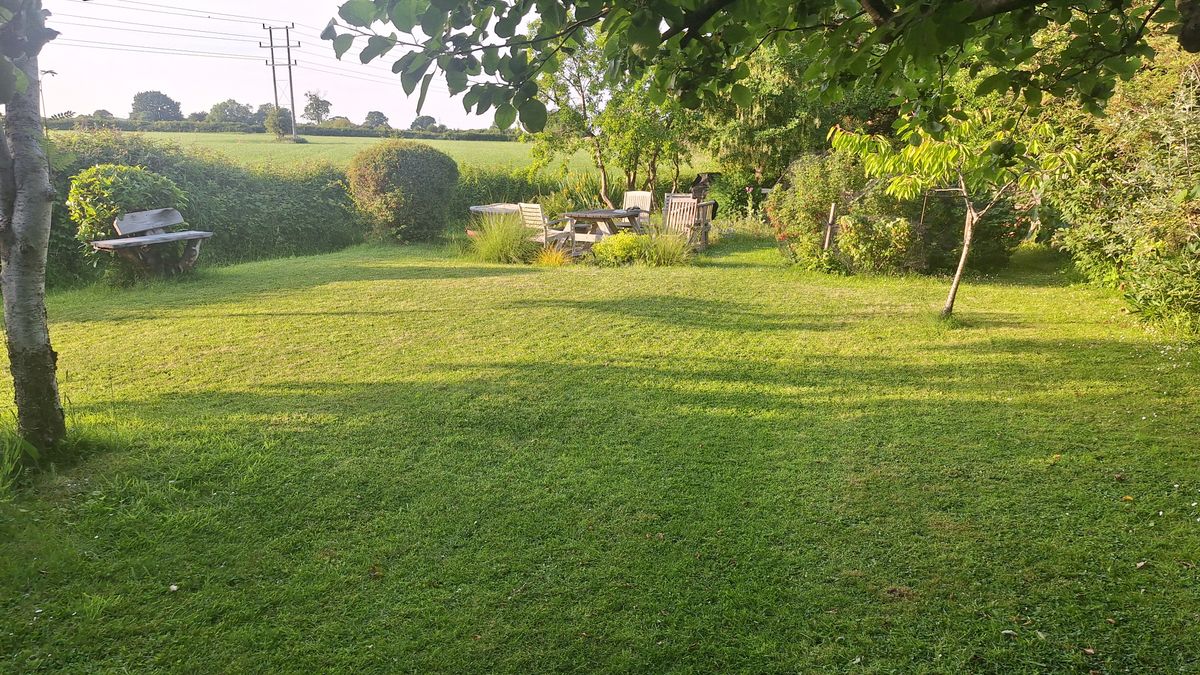
Once everything was set up properly, I didn’t encounter any issues with navigation; the lawnbot never got lost or ended up somewhere it should not be, and it reliably returned to its base once a task was complete – or if it ran out of juice mid-mow. It had no trouble traversing really quite steep ground, and was able to mow quite close to the sloped edge of the brook without taking a dip. (Initially, I left a large border for fear the Yuka Mini would go for a swim, but once I’d used it for a while and seen how well it navigated, I shifted the perimeter closer to the water.)
Object avoidance is solid, too. If I stood in front of the bot while it was mowing, it would duly pause and make its way around me before continuing.
- Performance score: 4 out of 5
Mammotion Yuka Mini review: app
- App is fine but on the basic side, and lacks some fine-tuned controls
- Not the most logical layout, with some functions hard to find
- Functional, once you’ve figured out the quirks
Most control for the Yuka Mini comes via the companion app. Overall I found it fine, but not amazing. I’m more used to testing robot vacuums, and in comparison to most of the robovac apps I’ve used, the Mammotion app felt a little clunky and simplistic. Settings aren’t always where you’d expect to find them; there were some spelling errors in the text (not the end of the world, but indicative of a lack of care); and the instructions weren’t always clear.
For example, the bot is apparently designed to straddle the edges of paths, so you don’t end up with an uncut border. I expected this to be an option you could toggle on or off in the app, but it’s not. (It’s only suitable for paths that are perfectly flat, and the ones in my test yard don’t fit this requirement.) There’s a decent range of adjustment options, but they’re a little tucked away and not accessible if the bot has lost connection to the internet.
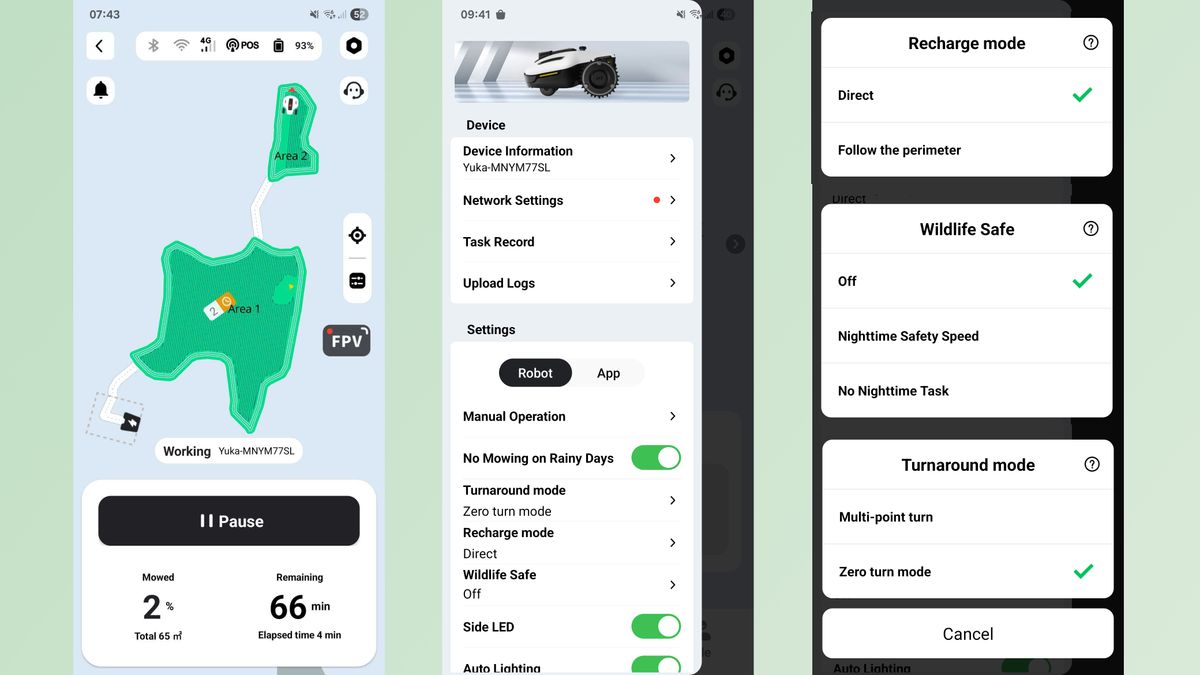
The map is also very simplistic; just a cutting area, with nothing else specified. I imagined you might be able to indicate a tree, a flower bed or a pond – if not to adjust how the lawnbot behaves at that border, then at least to help you understand where you are on the map. This is not an option, however.
I found if I was a long way from the lawnbot, the app would regularly lose contact. If the robot wasn’t cutting at the time, I’d have to carry the bot back to within Wi-Fi range before I could instruct it. If it was cutting at the time, it would continue on with its task, but I couldn’t watch its progress. This felt a little risky, although I guess I’d only be getting very basic information anyway.
All that said, once I’d figured out where things were, the app was usable and did what I needed it to. Middling marks.
Should you buy the Mammotion Yuka Mini?
|
Attribute |
Notes |
Rating |
|---|---|---|
|
Value |
Not cheap, but relatively affordable in the market, and there are deals to be had. Product feels high quality. |
4 / 5 |
|
Design |
Relatively compact and lightweight lawnbot. Navigates using satellites and an RTK receiver, although there is also a paid-for 4G navigation option. |
4.5 / 5 |
|
Performance |
Neat, quiet and thorough mowing, and reliable navigation and object avoidance. Setup a little confusing. |
4 / 5 |
|
App |
Rather basic, slightly unintuitive and lacks fine controls, although generally does what you need it to do. |
3 / 5 |
Buy it if…
Don’t buy it if…
Mammotion Yuka Mini: alternatives to consider
| Header Cell – Column 0 |
Mammotion Yuka Mini 600 |
Mammotion LUBA 2 AWD 1000 |
|---|---|---|
|
Recommended lawn size: |
0.15 acres / 600㎡ |
0.25 acres / 1,000㎡ |
|
Max lawn size: |
0.2 acres / 800㎡ |
0.3 acres / 1,012㎡ |
|
Cutting width: |
7.5in / 19cm |
15.7in / 40cm |
|
Cutting height: |
0.8-2.4in / 2-6cm, mechanical |
1 – 2.7in / 2.5-7cm, motorized |
|
Drivetrain: |
Two-wheel drive |
All-wheel drive |
|
Max zones: |
15 |
10 |
|
Incline ability: |
50% (27°) |
80% (38°) |
|
Waterproof: |
IPX6 |
IPX6 & IPX7 |
|
Lawnbot size (L x W x H): |
20.7 x 16.3 x 11.1in / 52.5 x 41.3 x 28.1cm |
27.2 x 20.2 x 10.7in / 69 x 51.3 x 27.3cm |
|
Lawnbot weight: |
23.4lbs / 10.6kg |
37.7lbs / 17.1 kg |
|
Mow time per charge: |
55 mins |
120 mins |
How I tested the Mammotion Yuka Mini
I set up the Mammotion Yuka Mini in my parents’ yard, which includes three main grassy areas. There are various obstacles, including patio areas, beds in the middle of the lawn, trees and a brook. I set it up using the instructions provided (supplemented by my own research, when that didn’t go to plan), mapped the area, and ran several mowing tests over the course of a few days. It was then used as the primary mower over the course of the month that followed, with me visiting regularly to check on progress. I assessed it based on the neatness of cutting, accuracy of navigation, and ease of use.
Read more about how we test

